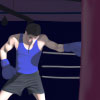
Porcupines, with their unique quills and slow-moving demeanor, are fascinating creatures that roam the forests of North and South America. In this article, we explore the anatomy, behavior, and habitat of these prickly mammals.
Anatomy
Porcupines have a stout and plump body, with a head that is small in proportion to their body. They are covered with sharp, needle-like quills that can grow up to several inches long. Contrary to popular belief, porcupines cannot shoot their quills, but they can release them when they feel threatened. Their quills are made of keratin, the same material found in human hair and nails. Porcupines have strong teeth that allow them to chew on hard foods like bark and twigs. They also have a keen sense of smell and hearing, but their eyesight is relatively poor.
Behavior
Porcupines are primarily active at night and spend their days sleeping in trees or dens. They are solitary animals and do not interact with other porcupines much, except during mating season. When threatened, porcupines will raise their quills and rattle them to create a warning sound. If the predator does not back off, the porcupine will charge backwards to impale the predator with its quills. Porcupines are herbivores and mainly eat bark, leaves, and twigs. They have a special digestive system that allows them to break down tough plant materials.
Habitat
Porcupines are found in a variety of habitats, from forests and grasslands to deserts and rocky areas. They are excellent climbers and are often seen in trees. Porcupines are not migratory animals and tend to stay in the same area throughout their lives. They make their dens in hollow trees or under logs, and these dens can be used for many years. Porcupines are not fast runners, but their quills provide them with excellent protection against predators.
















